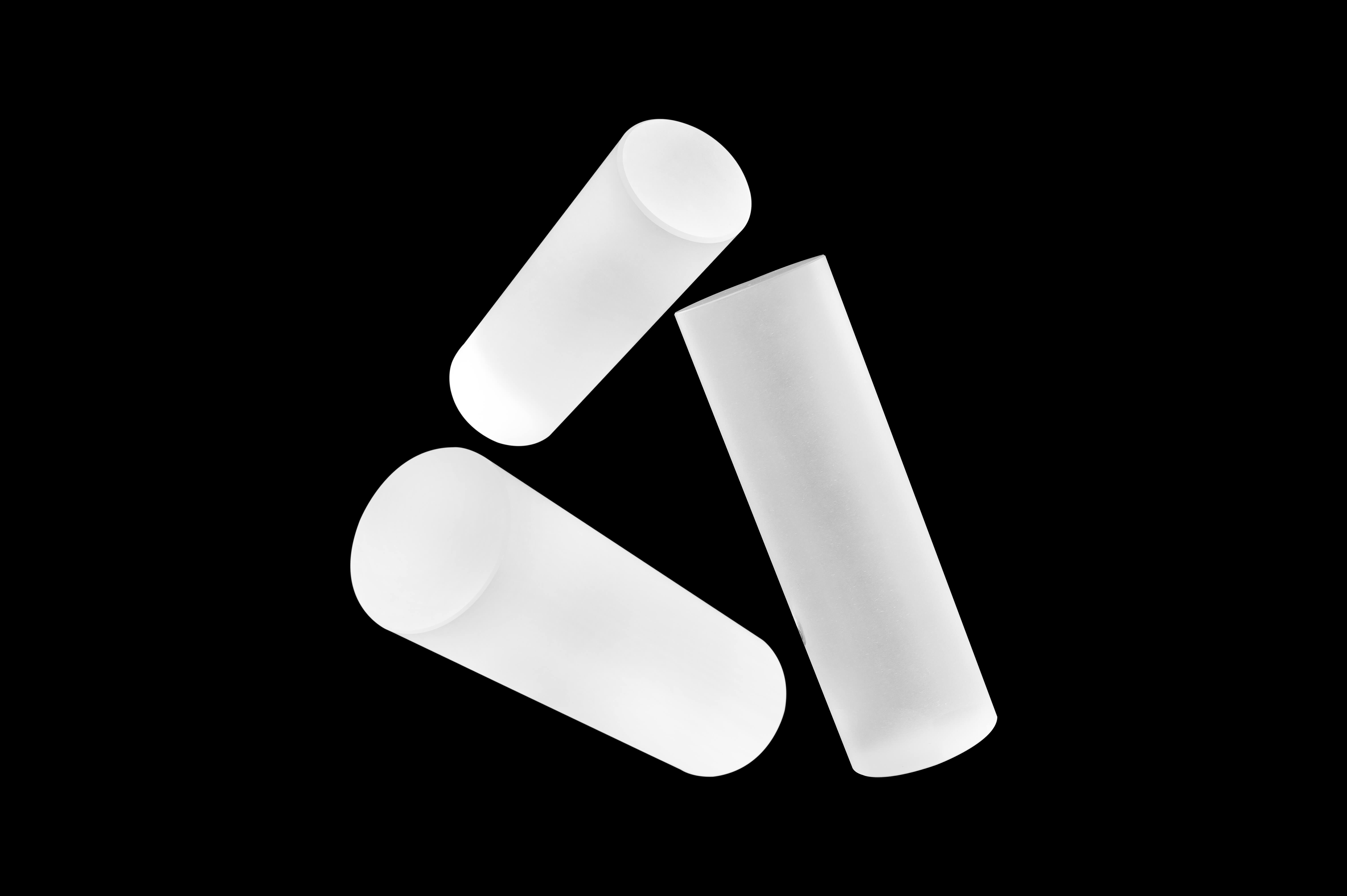-
 UV Calcium Fluoride
UV Calcium FluorideTypical spectral characteristics are 205NM and 306NM with no significant absorption, and the requirement for no reduction in infrared transmission. UV single crystals are mostly used in day-blind detectors 260-280NM or for UV imaging to eliminate chromatic aberrations, resulting in lower noise and better image quality. They are also partially used in UV vacuum observation windows or for spectral analysis. UV materials are mostly high purity chemical synthetics and require controlled absorption of cerium and lead in the crystal growth and must comply with ROHS & REACH standards. There are, of course, some natural ore materials that are screened later to meet the requirements, but because the consistency and stability of the material is not guaranteed, natural materials are generally not recommended.
-
 Infrared polycrystalline Calcium Fluoride
Infrared polycrystalline Calcium FluorideIR polycrystalline, a structure with multiple crystals applied beyond 400 NM.
The typical characteristic is the presence of distinct grain boundaries, the number of grain boundaries is greater than one, mostly between two and four, and the number is not controllable.
The permeability of polycrystals is the same as that of single crystals, the chemical properties are the same and the physical mechanical properties are not significantly different from those of single crystals, but the optical delay properties are not as good as those of single crystals.
Because of the homogeneous properties of calcium fluoride and the high yield and low price of polycrystals, they can be used for protective windows, single lenses or single prisms, but for high power laser applications or for lenses in a set, single crystals are often recommended.
-
 NaI:TI
NaI:TIThallium doped sodium iodide crystal (NaI:TI) is a high performance scintillation crystal. These crystals are grown from sodium iodide (NaI) as a base material with an appropriate concentration of the activator thallium (TI) and have a maximum luminous wavelength of 415 nm, which is well matched to the photocathode of common photomultiplier tubes.
Nal:TI scintillators are colourless, transparent crystals with no absorption of their own light. Because of its high density and high effective atomic number, it has a strong absorption capacity and high energy resolution for X-rays and “rays, so it occupies an important position in radiation detection, it is an important basic material in the detection instruments of geology, mining, petroleum, coal, medical, security, industrial CT and environmental testing.
-
 Calcium fluoride (CaF2)
Calcium fluoride (CaF2)ICC-Raman: No fluorescence at 193nm and above under 1W laser, widely used in fluorescence spectrometer.
ICC-E: High internal transmittance, low light energy loss, used in EXCIMER 193/248/355 excimer laser.
ICC-UV: applied to the 200-400nm ultraviolet lens.
ICC-VISIR: applied to the infrared and visible wavelength bands such as 400-10000nm.
ICC-LS: Low-stress and high-uniformity material. The average stress value is less than 2NM and the maximum stress value is less than 15NM. It is widely used in microscope objectives and precision imaging lenses.
-
 Barium fluoride(BaF2)
Barium fluoride(BaF2)ICC has barium fluoride for IR(high transparency)/ flicker (low background) applications in high-energy physics, multispectral cameras, infrared thermometry and thermal imaging.
It has the advantages of wide spectrum, large supply and low price. It can be used as windows, flat films, domes, lenses, prisms, etc., and has a wide range of applications in FTIR, LWIR, hyperspectral cameras and other fields.
-
 Magnesium fluoride (MgF2)
Magnesium fluoride (MgF2)MgF2-E: 193nm / 248nm / 355nm excimer, excellent uniformity, no small-angle grain boundaries;
MgF2-PS: PID 10.6eV and spectrum analyzer have low energy loss and stable light energy;
MgF2-W: Wave plate, high orientation accuracy, no small-angle grain boundaries, low stress;
MgF2-V: used in ultraviolet/infrared light sources, vacuum viewports, lenses, prisms, etc.;
MgF2-H: Hot pressing, mainly used for dome cover;
- Crystal Material
- Lanthanum tribromide LaBr3
- Calcium fluoride (CaF2)
- Barium fluoride(BaF2)
- Magnesium fluoride (MgF2)
- Lithium fluoride(LiF)
- Silicon material(Si)
- Germanium material(Ge)
- NaI:TI
- Lithium Niobate
- Zinc Selenide(ZnSe)
- Zinc Sulfide(ZnS)
- Sapphire
- Quartz
- Laser Lenses
- Laser output Coupler
- Laser Protection Window
- Beam Combine
- Laser scanning mirror
- Laser Mirror
- Focusing Lens
- Laser Window






